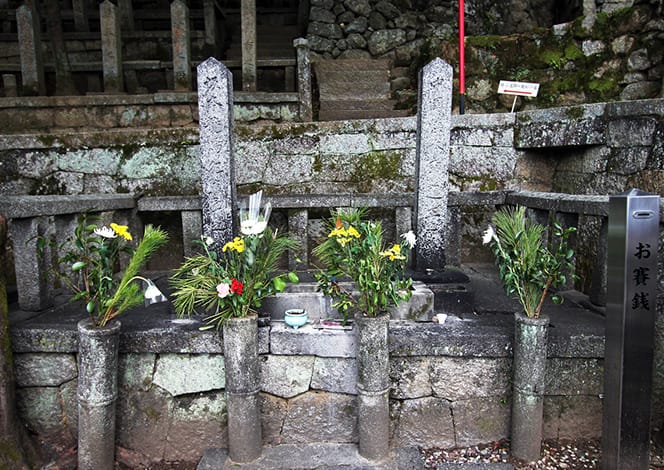Sanctuary
The souls of more than 3,100 individuals connected to the Bakumatsu period and the Meiji Restoration are enshrined at the Ryozen sanctuary, located within the grounds of Kyoto Ryozen Gokoku Shrine, on the hillside facing the Ryozen Museum of History.
A shrine dedicated to those gave their lives for their country was established through an edict issued by the Council of State on June 29, 1868 expressing Emperor Meiji’s wish that “henceforth a shrine be established on Higashiyama’s sacred mountain to pray in perpetuity for the souls of all those, civilian and military, who have given their lives for the nation since 1853.”

Graves (including a number of shared graves) containing the remains of 386 of those individuals, including Sakamoto Ryoma, Nakaoka Shintaro, and Kido Takayoshi and his wife Matsuko, have so far been identified.
Some of the other principal individuals interred here include Yoshimura Torataro, Takechi Hanpeita, Yanagawa Seigan, Tokugawa Nariaki, Umeda Unpin, Maki Yasuomi, Hirano Kuniomi, Hashimoto Sanai, Rai Mikisaburo, Nakayama Tadamitsu, and Tomobayashi Mitsuhira.
The annual Ryoma Festival, held every year on November 15th in front of Sakamoto Ryoma’s grave, draws many visitors.
The graves of Sakamoto (left) and Nakaoka Shintaro. Entrance to the sanctuary is through the shrine. A separate admission fee is required.
Ceremony Commemorating the Restoration of Power to Emperor Meiji
On November 9, 1867 (the 14th day of the 10th month according to the Japanese lunar calendar), Tokugawa Yoshinobu resigned, restoring power to Emperor Meiji. Every year on October 14th, a ceremony commemorating this event and honoring those who gave their lives is held in front of the Ryozen Hyochu Memorial.
